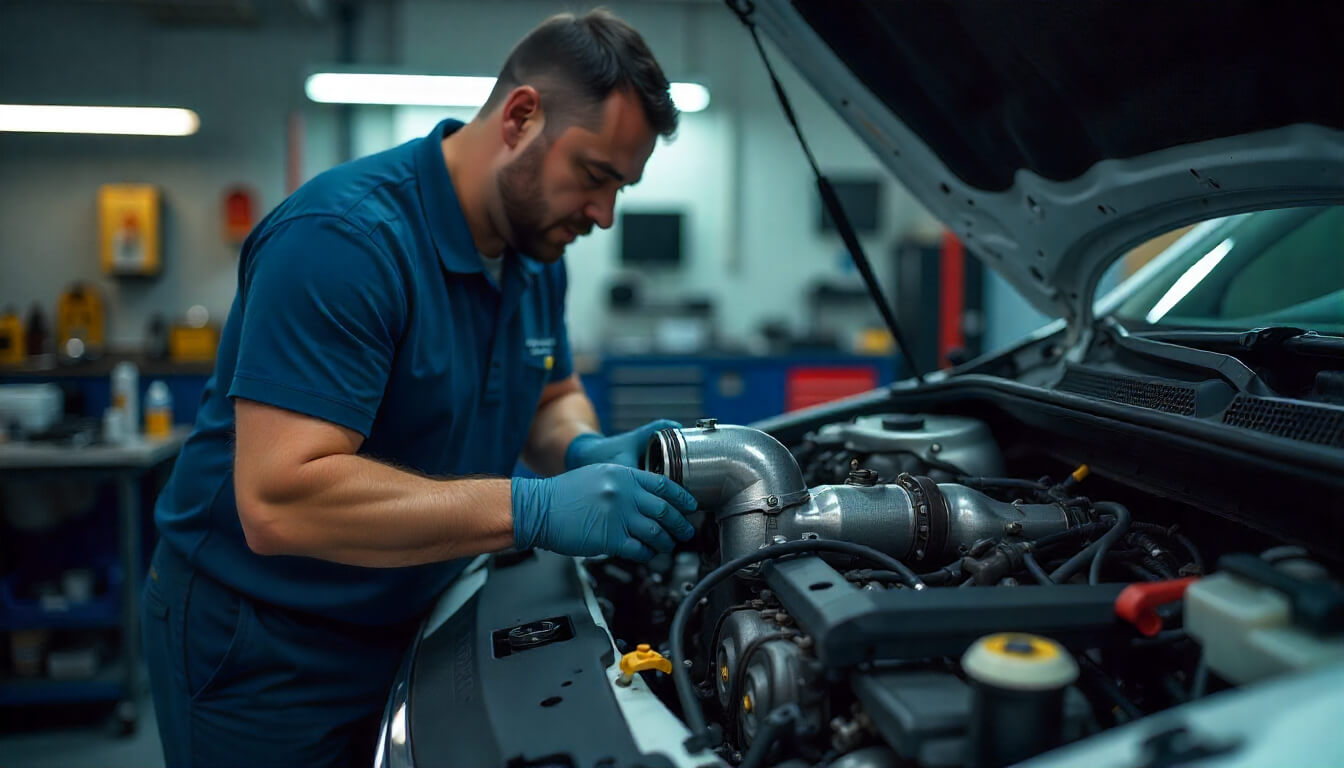Modern cars are increasingly equipped with turbocharged engines, which provide the perfect balance of power, economy and dynamics. But many car owners are still apprehensive, believing that turbocharged engines are always expensive and very difficult to repair. However, these fears are most often misconceptions based on a lack of information. This article will help to understand the true nature of turbocharged engines and dispel myths related to their maintenance.
How a turbocharger works: key to understanding
A turbocharger, despite its apparent complexity, works on a fairly simple principle. It uses the energy of the exhaust gases to drive a turbine wheel. This in turn turns the compressor wheel. The compressor wheel forces additional air into the engine cylinders, which allows for more complete combustion and therefore more power. This system operates at extremely high temperatures and rotational speeds. The turbine shaft can reach more than 200,000 revolutions per minute. For this reason, even the smallest problems can lead to serious consequences. When turbocharged engines are repaired, the precision of this mechanism is always taken into account.
Common causes of breakdowns
To understand whether you should be afraid of repairing a turbocharged engine, you need to know why it fails. The main causes of breakdowns are related not to design features, but to improper operation. The most common problem is poor-quality engine oil or its low level. The turbine is lubricated with the same oil as the engine. High temperatures inside the turbine can cause the oil to clog and form deposits that clog the oil passages. As a result, the turbine shaft does not receive sufficient lubrication, causing the bearings to wear out quickly.
Entry of foreign objects is another serious cause. Dust particles, sand, or even tiny pieces of plastic from poor quality connections can damage the compressor wheel blades. This unbalances the entire structure, which causes vibration and eventually leads to turbine failure. In addition, overheating also plays an important role in breakdowns. If the engine is switched off immediately after active driving, the hot oil stops circulating. This causes thermal stresses on the bearings and leads to premature wear. This is why preventive maintenance is so important to avoid turbocharged engine repairs.
Malfunction symptoms: What to look out for
Timely diagnosis can save time and money. It is important to be able to recognise the symptoms that indicate the need to pay attention to the condition of the turbine. Firstly, it is a decrease in power. If the car is slower to accelerate, this may indicate inefficient operation of the turbocharger. Secondly, unusual sounds. Whistling, similar to the sound of a "pressure cooker", or grinding when the engine is running - these are sure signs that the turbine needs diagnostics.
Excessive smoke from the exhaust pipe is also an important signal. Blue smoke often indicates that oil is entering the combustion chamber through worn turbine seals, while black smoke indicates an over-enriched fuel-air mixture. Third is increased oil consumption. If oil leaks through the turbine, you have to refill it more often. Therefore, if you notice one or more of these symptoms, do not delay a visit to a specialist.
Cost of repair and the choice between repair and replacement
Cost is one of the main factors that makes drivers fear turbo engine repair. The cost can really vary depending on the nature of the breakdown and the car model. For example, if the problem is minor bearing wear, you can get by with replacing them. This will be much cheaper than a full turbine replacement. More serious failures, such as damage to the shaft or blades, may require replacement of the entire cartridge or even the entire turbine.
Many specialised services offer turbocharged engine overhaul, which includes complete disassembly, cleaning, replacement of worn parts and balancing. This allows the turbine to be restored to near factory condition. A quality repair performed by professionals, using original or high quality parts, is usually accompanied by a warranty. This makes it a reasonable alternative to buying a new turbine, which costs considerably more.
Prevention: the best way to avoid problems
Prevention is the most effective way to avoid costly repairs to turbocharged engines. Taking care of your turbo starts with proper engine care. Use only high quality engine oil recommended by the manufacturer of your vehicle. Regular oil and filter changes are the first and most important rule. Do not skimp on the quality of consumables. Cheap oil can lead to seizure and rapid wear.
It is also very important to observe the correct operating mode. Allow the engine to idle for 30-60 seconds before driving. This is to allow the oil to warm up and distribute evenly to all components, including the turbine. Do not switch off the engine immediately after intensive driving. Allow it to idle for 1-2 minutes. This is called turbo timing. This allows the turbine to cool down and the oil to circulate. Following these simple rules will significantly extend the life of your turbine and help you avoid unforeseen failures.
Choosing a service and experts
The choice of service should be made with all responsibility. Repair of turbocharged engines requires specialised knowledge and equipment. Not every car service has the necessary qualifications. Look for services specialising in turbine repair, which have modern equipment for diagnostics and balancing. Be sure to specify what spare parts will be used and whether a warranty is provided for the work performed. Qualified specialists will be able to accurately determine the cause of the breakdown, offer the best solution and perform repairs at the highest level. This will save you from unnecessary worries.
Conclusion
Thus, the fear of turbocharged engines and their repair is often unjustified. Yes, these engines require more careful attitude to oil quality and proper operation mode. But, if you follow all the recommendations and do not save on maintenance, they will serve long and reliably. Repair of turbocharged engines is not a verdict, but a solvable task. The main thing is to react in time to the symptoms and trust your car only to professionals. Ultimately, a turbocharger is just one of many parts of a car, and its failure should not cause panic. Instead, treat it as a normal technical procedure that can be resolved quickly and efficiently.

 Repair of turbocharged engines: should I be afraid?">
Repair of turbocharged engines: should I be afraid?">
